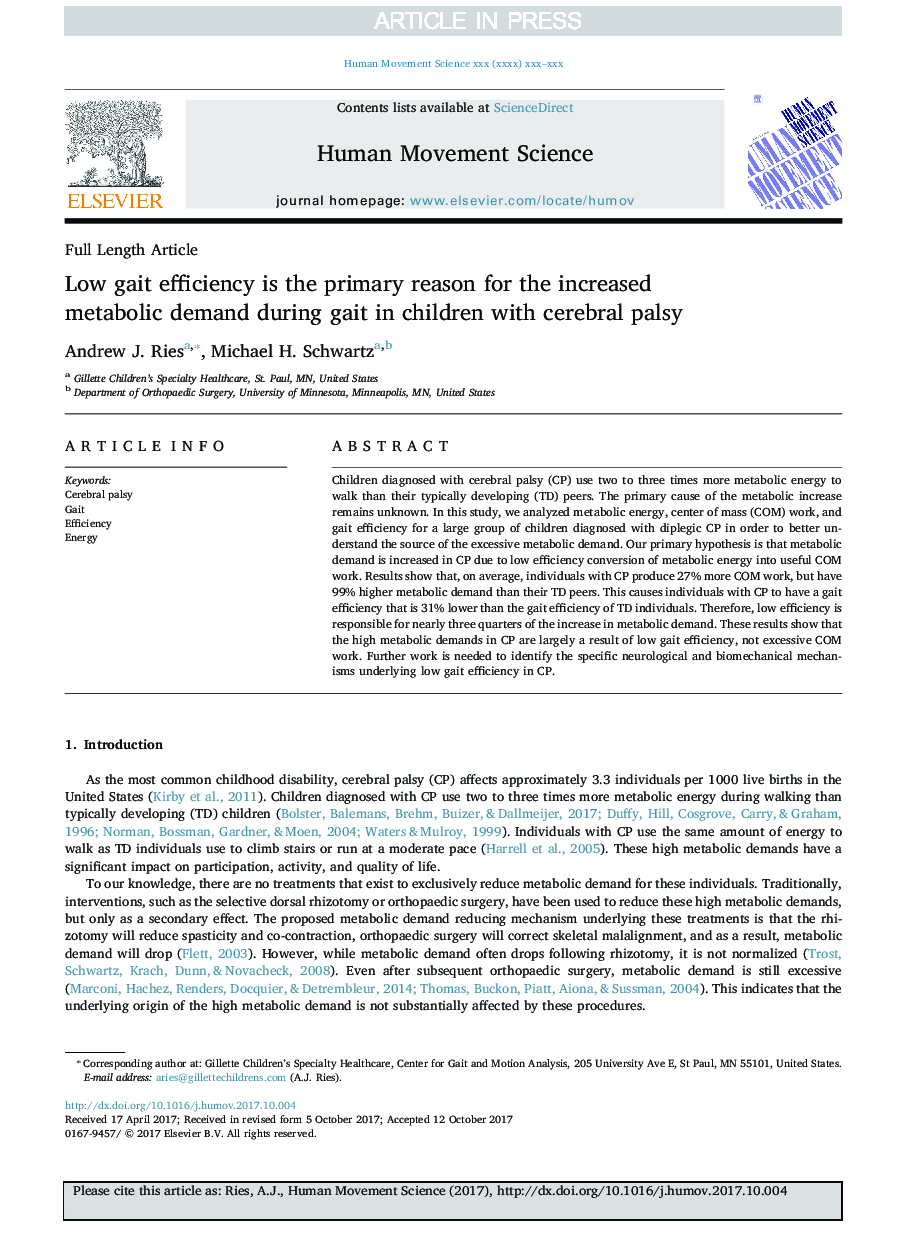| Article ID | Journal | Published Year | Pages | File Type |
|---|---|---|---|---|
| 7291073 | Human Movement Science | 2018 | 8 Pages |
Abstract
Children diagnosed with cerebral palsy (CP) use two to three times more metabolic energy to walk than their typically developing (TD) peers. The primary cause of the metabolic increase remains unknown. In this study, we analyzed metabolic energy, center of mass (COM) work, and gait efficiency for a large group of children diagnosed with diplegic CP in order to better understand the source of the excessive metabolic demand. Our primary hypothesis is that metabolic demand is increased in CP due to low efficiency conversion of metabolic energy into useful COM work. Results show that, on average, individuals with CP produce 27% more COM work, but have 99% higher metabolic demand than their TD peers. This causes individuals with CP to have a gait efficiency that is 31% lower than the gait efficiency of TD individuals. Therefore, low efficiency is responsible for nearly three quarters of the increase in metabolic demand. These results show that the high metabolic demands in CP are largely a result of low gait efficiency, not excessive COM work. Further work is needed to identify the specific neurological and biomechanical mechanisms underlying low gait efficiency in CP.
Keywords
Related Topics
Life Sciences
Neuroscience
Cognitive Neuroscience
Authors
Andrew J. Ries, Michael H. Schwartz,
